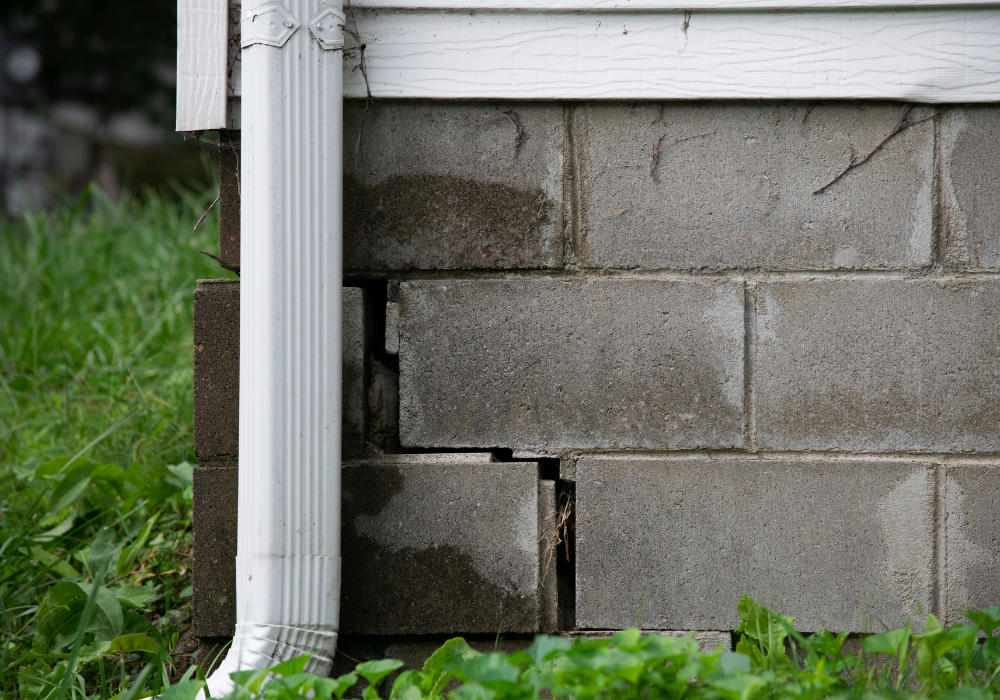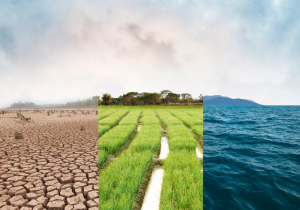How Climate Affects Your Home’s Foundation

When we think about climate change and its effects, our minds often jump to natural disasters, fluctuating weather patterns, and the impact on wildlife. Rarely do we consider how the shifting climate affects something as integral to our daily lives as our homes, specifically the foundations upon which they stand. This blog post aims to shed light on this overlooked aspect, providing homeowners with the knowledge to protect their most significant investment.
Understanding Your Home’s Foundation
The foundation is the bedrock of your home, designed to bear the entire weight of the structure. It keeps your home level, stable, and safe from ground moisture. Common types of foundations include slab-on-grade, crawl space, and basement foundations, each with its vulnerabilities. For instance, slab foundations are more susceptible to shifting in areas with expansive soils, while crawl spaces can suffer from excessive moisture or dry rot.
 How Climate Affects Foundations
How Climate Affects Foundations
Climate conditions have a profound effect on home foundations. Here’s how different climates play a role:
- Dry Climates: In arid regions, the soil can contract, causing a foundation to shift or crack. This is particularly true for areas with expansive clay soils that swell when wet and shrink when dry.
- Wet Climates: Heavy rainfall and flooding can oversaturate the soil, leading to foundation settlement or even upheaval in extreme cases, as the soil underneath the foundation erodes or shifts significantly.
- Extreme Temperatures: Repeated freezing and thawing cycles can wreak havoc on foundations. Frozen soil expands, exerting pressure on the foundation, while thawing can create a void, leading to settlement.
Real-world examples include the frequent foundation issues seen in Texas due to its expansive clay soil, and the frost heave phenomena in colder northern climates, which can cause severe foundation damage.
Signs of Climate Damage to Foundations
Knowing the early signs of climate-related foundation damage can save homeowners from costly repairs down the line. Look out for:
- Cracks in the foundation, walls, or floors
- Doors and windows that stick or won’t close properly
- Uneven floors
- Gaps between exterior walls and the foundation
- Water pooling near the foundation after heavy rain
 Preventing and Mitigating Climate Damage
Preventing and Mitigating Climate Damage
Fortunately, there are steps homeowners can take to mitigate these risks:
- Proper Drainage: Ensure your home’s surrounding soil slopes away from the foundation, preventing water accumulation. Installing gutters and downspouts that channel water away from the home is also critical.
- Soil Moisture Control: In dry climates, maintaining consistent soil moisture around your foundation can prevent contraction and expansion. This can be achieved through regular watering or installing a soaker hose around the perimeter.
- Insulation: Protecting your foundation from extreme temperatures with adequate insulation can reduce the risk of frost heave and other temperature-related damage.
- Regular Inspections: Keeping an eye on your foundation and the surrounding landscape helps catch issues early. Consult a professional if you notice any signs of damage.
Climate plays a significant role in the integrity of your home’s foundation. While we can’t control the weather, understanding its impacts and taking preventative steps can help protect your home from potentially disastrous and costly damage. Assess your home’s foundation condition regularly and don’t hesitate to take action or seek professional advice. Your home is your haven; safeguarding its foundation ensures its longevity for years to come.
